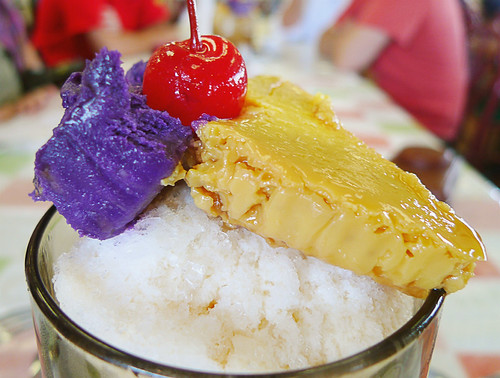 |
| Gua bao from Yummy Kitchen, Houston, TX |
I will not be blamed. I'll take credit.
In counting down her mandated list of 100 Favorite dishes for the Houston Press Eating Our Words blog, Katharine Shilcutt places
the gua bao from Yummy Kitchen at #37, and she was kind enough to credit me. Do I like gua bao? Yes, indeed, when it's done right. I've surveyed quite a few. The (in)famous pork belly buns from Momofuku actually try to blur the definition between gua bao and Peking duck (which isn't too far of a stretch, as some places serve the same soft buns with Peking duck, rather than the laborious crepes).
 |
| Another look at the local beauty. The contrast in flavors and textures is really what makes things work. |
|
Now I referred her to Yummy Kitchen not without some experience testing a few other places out. For example, the newly opened
Kiki Cafe also offers gua bao on their menu, and it is literally a block a way (granted, a Houston city block is a bit larger than a New York one). I got to test that out with Twitter friend @ziggysmogdust.
 |
| Kiki Cafe's gua bao offering. |
The conclusion was unanimous: these were anemic shadows of a gua bao's promise. One look at the flat and listless bun is all you need to know.
Gua bao variants exist in myriad forms. I've seen "healthy" gua bao that use pulled pork (essentially removing the fatty layers from the belly). Even high end gua bao.
 |
| Gua bao, Bellagio, Greenhills, Mandaluyong, MM, Philippines. |
This verson from Bellagio sports a beautifully fluffy bun, carefully stewed meat, fresh scallions, and chile oil. But all the delicacy does not jive - there's something casual and comforting about the gua bao experience, and it doesn't seem to sit comfortably amidst fine airs. To me, it's a phone call from an old friend, which is why my favorite restaurant gua bao is a humble one from the past.
 |
| Gua bao, Ha-Yuan, various locations, Manila, Philippines |
Ha-Yuan is an old chain of restaurants form immigrant Chinese in Manila, and they turn out a good gua bao. It isn't fancy, and it's just right. Too bad it's far away - meanwhile, Yummy Kitchen here in town does a pretty good facsimile.
Wait, did she call me a
belly pusher? She has no idea...




































